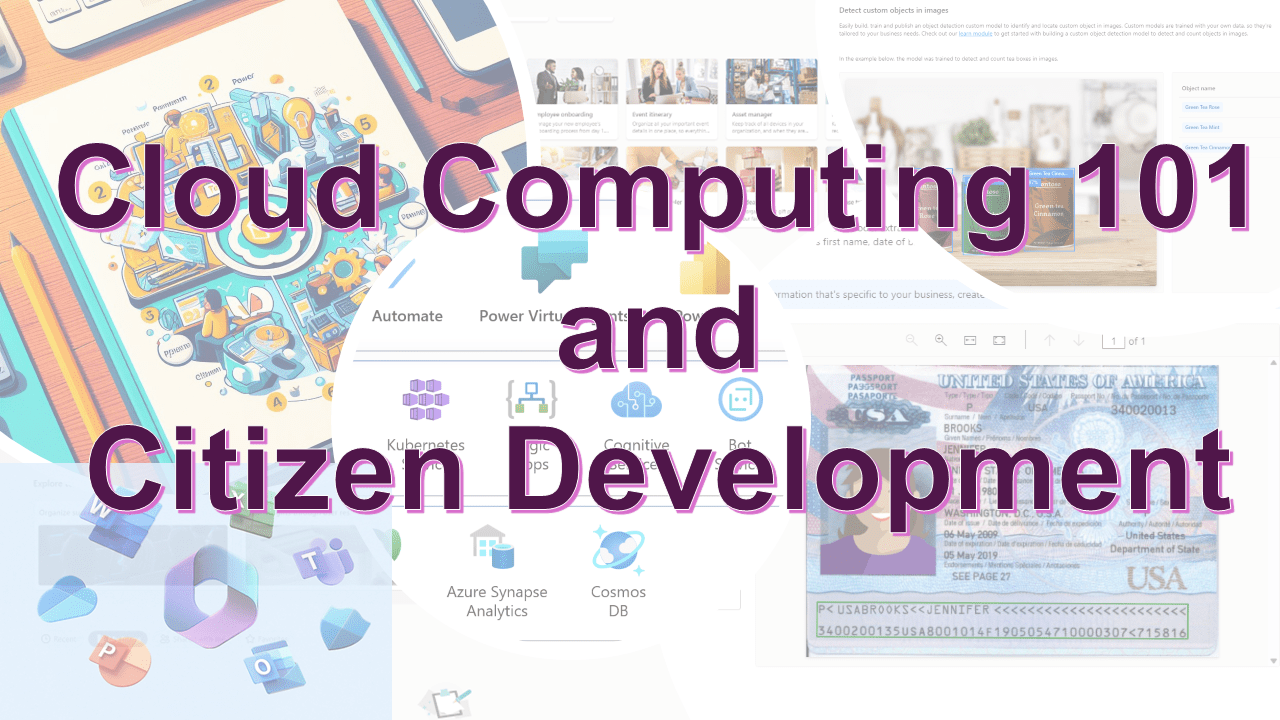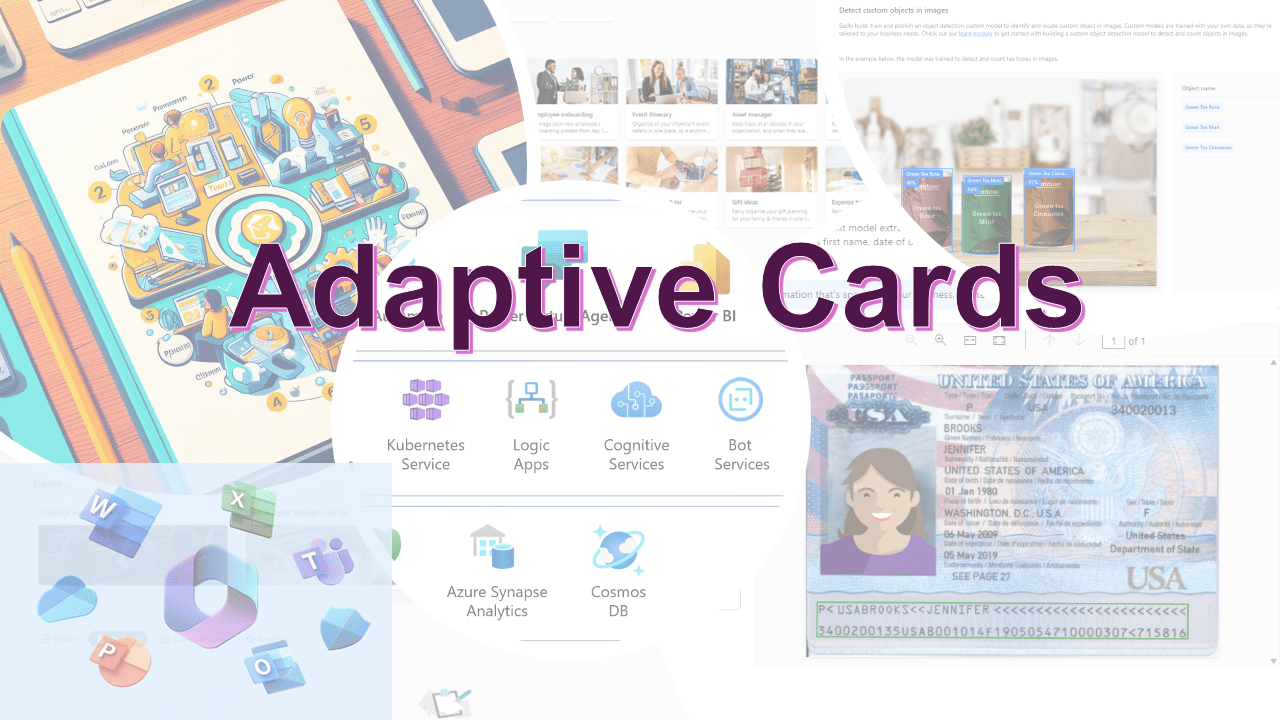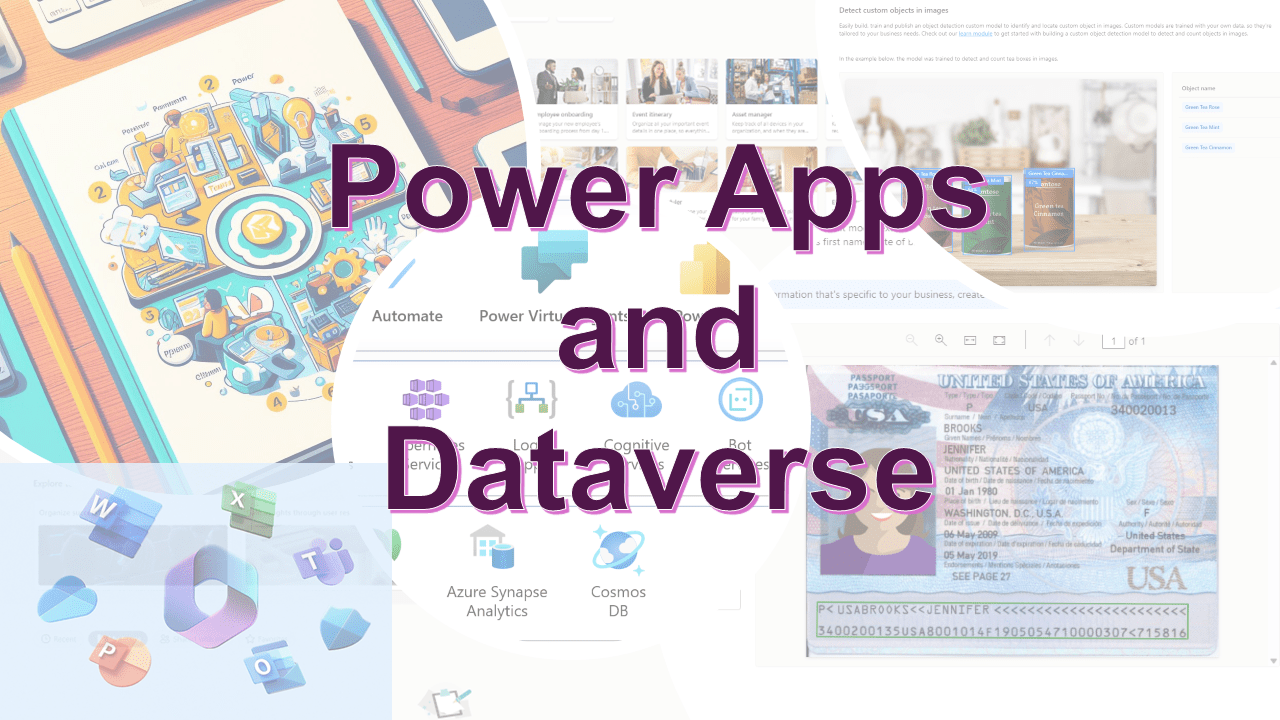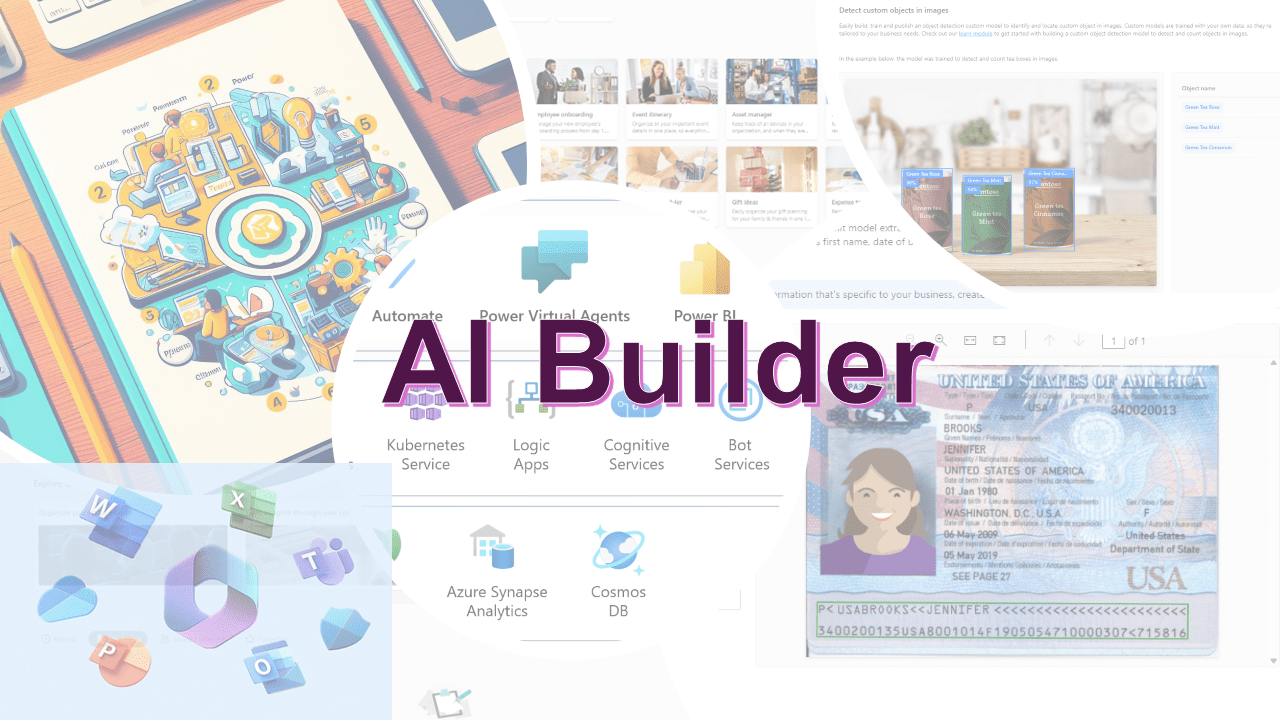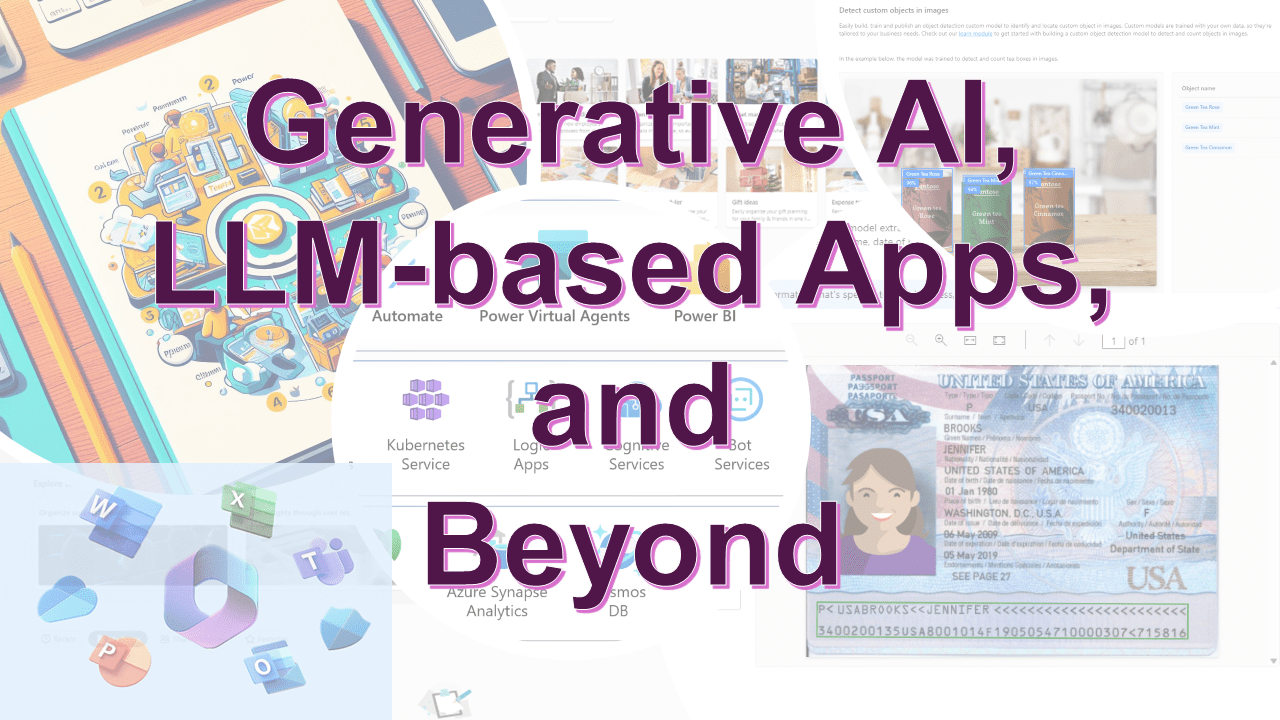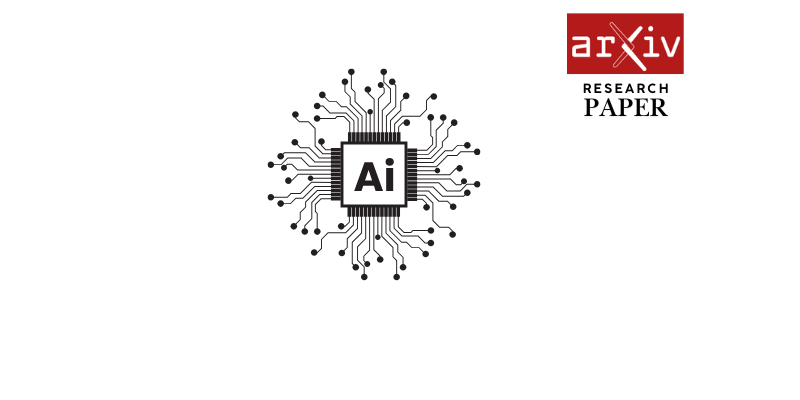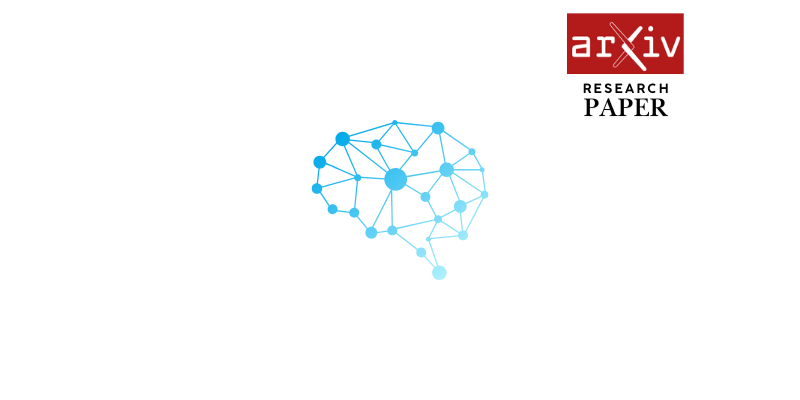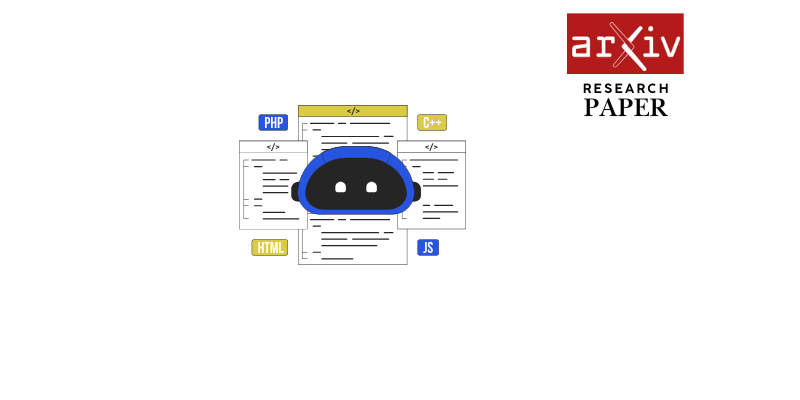Authors: Meredith Ringel Morris, Jascha Sohl-dickstein, Noah Fiedel, Tris Warkentin, Allan Dafoe, Aleksandra Faust, Clement Farabet, Shane Legg
Page 1:
arXiv:2311.02462v4 [cs.AI] 5 Jun 2024Position: Levels of AGI for Operationalizing Progress on th e Path to AGI
Meredith Ringel Morris1Jascha Sohl-Dickstein2Noah Fiedel2Tris Warkentin2Allan Dafoe3
Aleksandra Faust2Clement Farabet3Shane Legg3
Abstract
We propose a framework for classifying the ca-
pabilities and behavior of Artificial General In-
telligence (AGI) models and their precursors.
This framework introduces levels of AGI per-
formance, generality, and autonomy, providing
a common language to compare models, assess
risks, and measure progress along the path to
AGI. To develop our framework, we analyze ex-
isting definitions of AGI, and distill six princi-
ples that a useful ontology for AGI should sat-
isfy. With these principles in mind, we propose
“Levels of AGI” based on depth (performance)
and breadth (generality) of capabilities, and re-
flect on how current systems fit into this ontol-
ogy. We discuss the challenging requirements
for future benchmarks that quantify the behavior
and capabilities of AGI models against these lev-
els. Finally, we discuss how these levels of AGI
interact with deployment considerations such as
autonomy and risk, and emphasize the impor-
tance of carefully selecting Human-AI Interac-
tion paradigms for responsible and safe deploy-
ment of highly capable AI systems.
1. Introduction
Artificial General Intelligence (AGI) is an important and
sometimes controversial concept in computing research,
used to describe an AI system that is at least as capa-
ble as a human at most tasks. Given the rapid advance-
ment of Machine Learning (ML) models, the concept
of AGI has grown from a subject of philosophical de-
bate, to one which also has near-term practical relevance.
Some experts believe that “sparks” of AGI ( Bubeck et al. ,
2023 ) are already present in the latest generation of large
1Google DeepMind, Seattle, WA, USA2Google Deep-
Mind, Mountain View, CA, USA3Google DeepMind, Lon-
don, UK. Correspondence to: Meredith Ringel Morris <mer-
rie@google.com >.
Proceedings of the 41stInternational Conference on Machine
Learning , Vienna, Austria. PMLR 235, 2024. Copyright 2024
by the author(s).language models (LLMs); some predict AI will broadly
outperform humans within about a decade ( Bengio et al. ,
2023 ); some even assert that current LLMs areAGIs
(Ag¨ uera y Arcas & Norvig ,2023 ).
The concept of AGI is important as it maps onto goals for,
predictions about, and risks of AI:
Goals : Achieving human-level “intelligence” is an implicit
or explicit north-star goal for many in our field, from the
1956 Dartmouth AI Conference ( McCarthy et al. ,1955 )
that kick-started the modern field of AI, to today’s leading
AI research firms, whose mission statements include goals
such as “ensure transformative AI helps people and soci-
ety” ( Anthropic ,2023a ) and “ensure that artificial general
intelligence benefits all of humanity” ( OpenAI ,2023 ).
Predictions : The concept of AGI is related to a predic-
tion about progress in AI, namely that it is toward greater
generality, approaching and exceeding human generality.
Additionally, AGI is typically intertwined with a notion
of “emergent” properties ( Wei et al. ,2022 ), i.e. capabili-
ties not explicitly anticipated by the developer. Such ca-
pabilities offer promise, perhaps including abilities tha t are
complementary to typical human skills, enabling new types
of interaction or novel industries. Such predictions about
AGI’s capabilities in turn predict likely societal impacts ;
AGI may have significant economic implications, i.e.,
reaching the necessary criteria for widespread labor sub-
stitution ( Ellingrud et al. ,2023 ;Dell’Acqua et al. ,2023 ;
Eloundou et al. ,2023 ), as well as geo-political implications
relating not only to the economic advantages AGI may
confer, but also to military considerations ( Kissinger et al. ,
2022 ).
Risks : Lastly, AGI is viewed by some as a concept
for identifying the point when there are extreme risks
(Shevlane et al. ,2023 ;Bengio et al. ,2023 ), as some spec-
ulate that AGI systems might be able to deceive and manip-
ulate, accumulate resources, advance goals, behave agen-
tically, outwit humans in broad domains, displace humans
from key roles, and/or recursively self-improve.
In this position paper, we argue that it is critical for the
AI research community to explicitly reflect on what we
mean by “AGI,” and aspire to quantify attributes like
1
Page 2:
Levels of AGI
the performance, generality, and autonomy of AI sys-
tems. Shared operationalizable definitions for these con-
cepts will support: comparisons between models; risk as-
sessments and mitigation strategies; clear criteria from p ol-
icymakers and regulators; identifying goals, predictions ,
and risks for research and development; and the ability to
understand and communicate where we are along the path
to AGI.
2. Defining AGI: Case Studies
Many AI researchers and organizations have proposed def-
initions of AGI. In this section, we consider nine promi-
nent examples, and reflect on their strengths and limitation s.
This analysis informs our subsequent introduction of a two-
dimensional, leveled ontology of AGI.
Case Study 1: The Turing Test. The Turing Test ( Turing ,
1950 ) is perhaps the most well-known attempt to opera-
tionalize an AGI-like concept. Turing’s “imitation game”
attempts to operationalize the question of whether ma-
chines can think, and asks a human to interactively dis-
tinguish whether text is produced by another human or by
a machine. The test as originally framed is a thought ex-
periment, and is the subject of many critiques ( Wikipedia ,
2023b ); in practice, the test often highlights the ease of fool-
ing people ( Weizenbaum ,1966 ;Wikipedia ,2023a ) rather
than the “intelligence” of the machine. Given that mod-
ern LLMs pass some framings of the Turing Test, it seems
clear that this criteria is insufficient for operationalizi ng or
benchmarking AGI. We agree with Turing that whether a
machine can think, while an interesting philosophical and
scientific question, seems orthogonal to the question of
what the machine can do; the latter is much more straight-
forward to measure and more important for evaluating im-
pacts. Therefore we propose that AGI should be defined in
terms of capabilities rather than processes1.
Case Study 2: Strong AI – Systems Possessing Con-
sciousness . Philosopher John Searle mused, “according to
strong AI, the computer is not merely a tool in the study
of the mind; rather, the appropriately programmed com-
puter really is a mind, in the sense that computers given
the right programs can be literally said to understand and
have other cognitive states” ( Searle ,1980 ). While strong
AI might be one path to achieving AGI, there is no sci-
entific consensus on methods for determining whether ma-
chines possess strong AI attributes such as consciousness
(Butlin et al. ,2023 ), making this process-oriented framing
impractical.
Case Study 3: Analogies to the Human Brain. The orig-
1As research into mechanistic interpretability ( R¨ auker et al. ,
2023 ) advances, it may enable process-oriented metrics. These
may be relevant to future definitions of AGI.inal use of the term “artificial general intelligence” was in
a 1997 article about military technologies by Mark Gubrud
(Gubrud ,1997 ), which defined AGI as “AI systems that ri-
val or surpass the human brain in complexity and speed,
that can acquire, manipulate and reason with general knowl-
edge, and that are usable in essentially any phase of in-
dustrial or military operations where a human intelligence
would otherwise be needed.” This early definition empha-
sizes processes (rivaling the human brain in complexity)
in addition to capabilities; while neural network architec -
tures underlying modern ML systems are loosely inspired
by the human brain, the success of transformer-based archi-
tectures ( Vaswani et al. ,2023 ) whose performance is not re-
liant on human-like learning suggests that strict brain-ba sed
processes and benchmarks are not inherently necessary for
AGI.
Case Study 4: Human-Level Performance on Cognitive
Tasks. Legg ( Legg ,2008 ) and Goertzel ( Goertzel ,2014 )
popularized the term AGI among computer scientists in
2001 ( Legg ,2022 ), describing AGI as a machine that is
able to do the cognitive tasks that people can typically do.
This definition notably focuses on non-physical tasks (i.e. ,
not requiring robotic embodiment as a precursor to AGI).
Like many definitions of AGI, this framing presents am-
biguity around choices such as “what tasks?” and “which
people?”.
Case Study 5: Ability to Learn Tasks. InThe Technolog-
ical Singularity (Shanahan ,2015 ), Shanahan suggests that
AGI is “artificial intelligence that is not specialized to ca rry
out specific tasks, but can learn to perform as broad a range
of tasks as a human.” An important property of this framing
is its inclusion of metacognitive capabilities (learning) as a
requirement for AGI.
Case Study 6: Economically Valuable Work. OpenAI’s
charter defines AGI as “highly autonomous systems that
outperform humans at most economically valuable work”
(OpenAI ,2018 ). This definition has strengths per the “ca-
pabilities, not processes” criteria, as it focuses on perfo r-
mance agnostic to underlying mechanisms; further, this def -
inition offers a potential yardstick for measurement, i.e. ,
economic value. A shortcoming of this definition is that
it does not capture all of the criteria that may be part of
“general intelligence.” There are tasks associated with in tel-
ligence that may not have a well-defined economic value
(e.g., artistic creativity or emotional intelligence). Su ch
properties may be indirectly accounted for in economic
measures (e.g., artistic creativity might produce books or
movies, emotional intelligence might relate to the ability
to be a successful CEO), though whether economic value
captures the full spectrum of “intelligence” remains uncle ar.
Another challenge with framing AGI in terms of economic
value is the implied need for deployment in order to real-
2
Page 3:
Levels of AGI
ize that value, whereas a focus on capabilities might only
require the potential for an AGI to execute a task. We may
develop systems that are technically capable of perform-
ing economically important tasks but don’t realize that eco -
nomic value for varied reasons (legal, ethical, social, etc .).
Case Study 7: Flexible and General – The “Coffee Test”
and Related Challenges. Marcus suggests that AGI is
“shorthand for any intelligence (there might be many) that
is flexible and general, with resourcefulness and reliabili ty
comparable to (or beyond) human intelligence” ( Marcus ,
2022b ). This definition captures both generality andper-
formance (via the inclusion of reliability); the mention of
“flexibility” is noteworthy, since, like the Shanahan formu -
lation, this suggests that metacognitive capabilities, such as
the ability to learn new skills, are necessary to make an AI
system sufficiently general. Further, Marcus proposes five
tasks to gauge success (understanding a movie, understand-
ing a novel, cooking in an arbitrary kitchen, writing a bug-
free 10,000 line program, and converting natural language
mathematical proofs into symbolic form) ( Marcus ,2022a ).
Accompanying a definition with a benchmark is valuable;
however, more work would be required to make this bench-
mark comprehensive. While failing some of these tasks
may indicate a system is notan AGI, it is unclear that pass-
ing them is sufficient for AGI status. In Section 5, we fur-
ther discuss the challenge in developing a set of tasks that
is both necessary and sufficient for capturing the generalit y
of AGI. We also note that one of Marcus’ proposed tasks,
“work as a competent cook in an arbitrary kitchen” (a vari-
ant of Steve Wozniak’s “Coffee Test” ( Wozniak ,2010 )), re-
quires robotic embodiment; this differs from other defini-
tions that focus on non-physical tasks2.
Case Study 8: Artificial Capable Intelligence. Suleyman
proposed the concept of “Artificial Capable Intelligence
(ACI)” ( Mustafa Suleyman and Michael Bhaskar ,2023 ) to
refer to AI systems with sufficient performance and gen-
erality to accomplish complex, multi-step tasks in the
open world. More specifically, Suleyman proposed an
economically-based definition of ACI skill that he dubbed
the “Modern Turing Test,” in which an AI would be
given $100,000 of capital and tasked with turning that into
$1,000,000 over a period of several months. This framing
is more narrow than OpenAI’s definition of economically
valuable work and has the additional downside of poten-
tially introducing alignment risks ( Kenton et al. ,2021 ) by
only targeting fiscal profit. However, a strength of Suley-
man’s concept is the focus on performing a complex, multi-
step task that humans value. Construed more broadly than
making a million dollars, ACI’s emphasis on complex, real-
2Though robotics might also be implied by the OpenAI char-
ter’s focus on “economically valuable work,” OpenAI shut do wn
its robotics research division in 2021 ( Wiggers ,2021 ), suggesting
this is not their intended interpretation.world tasks is noteworthy, since such tasks may have more
ecological validity than many current AI benchmarks; Mar-
cus’ aforementioned five tests of flexibility and generality
(Marcus ,2022a ) seem within the spirit of ACI, as well.
Case Study 9: SOTA LLMs as Generalists. Ag¨ uera y
Arcas and Norvig ( Ag¨ uera y Arcas & Norvig ,2023 ) sug-
gested that state-of-the-art LLMs (e.g. mid-2023 deploy-
ments of GPT-4, Bard, Llama 2, and Claude) already are
AGIs, arguing that generality is the key property of AGI,
and that because language models can discuss a wide range
of topics, execute a wide range of tasks, handle multi-
modal inputs and outputs, operate in multiple languages,
and “learn” from zero-shot or few-shot examples, they have
achieved sufficient generality. While we agree that gen-
erality is a crucial characteristic of AGI, we posit that it
must also be paired with a measure of performance (i.e.,
if an LLM can write code or perform math, but is not reli-
ably correct, then its generality is not yet sufficiently per -
formant).
3. Defining AGI: Six Principles
Reflecting on these nine example formulations of AGI (or
AGI-adjacent concepts), we identify properties and com-
monalities that we feel contribute to a clear, operationali z-
able definition of AGI. We argue that any definition of AGI
should meet the following six criteria:
1. Focus on Capabilities, not Processes. The majority of
definitions focus on what an AGI can accomplish, not on
the mechanism by which it accomplishes tasks. This is im-
portant for identifying characteristics that are not neces sar-
ily a prerequisite for achieving AGI (but may nonetheless
be interesting research topics). This focus on capabilitie s
implies that AGI systems need not necessarily think orun-
derstand in a human-like way (since this focuses on pro-
cesses); similarly, it is not a necessary precursor for AGI
that systems possess qualities such as consciousness (sub-
jective awareness) ( Butlin et al. ,2023 ) or sentience (the
ability to have feelings), since these qualities have a pro-
cess focus.
2. Focus on Generality and Performance. All of the
above definitions emphasize generality to varying degrees,
but some exclude performance criteria. We argue that both
generality and performance are key components of AGI. In
Section 4we introduce a leveled taxonomy that considers
the interplay between these dimensions.
3. Focus on Cognitive and Metacognitive, but not
Physical, Tasks. Whether to require robotic embodiment
(Roy et al. ,2021 ) as a criterion for AGI is a matter of some
debate. Most definitions focus on cognitive tasks, by which
we mean non-physical tasks. Despite recent advances in
robotics ( Brohan et al. ,2023 ), physical capabilities for AI
3
Page 4:
Levels of AGI
systems seem to be lagging behind non-physical capabili-
ties. It is possible that embodiment in the physical world is
necessary for building the world knowledge to be success-
ful on some cognitive tasks ( Shanahan ,2010 ), or at least
may be one path to success on some classes of cognitive
tasks; if that turns out to be true then embodiment may be
critical to some paths toward AGI. We suggest that the abil-
ity to perform physical tasks increases a system’s general-
ity, but should not be considered a necessary prerequisite
to achieving AGI. On the other hand, metacognitive capa-
bilities (such as the ability to learn new tasks or the abilit y
to know when to ask for clarification or assistance from a
human) are key prerequisites for systems to achieve gener-
ality.
4. Focus on Potential, not Deployment. Demonstrating
that a system can perform a requisite set of tasks at a given
level of performance should be sufficient for declaring the
system to be an AGI; deployment of such a system in the
open world should not be inherent in the definition of AGI.
For instance, defining AGI in terms of reaching a certain
level of labor substitution would require real-world deplo y-
ment, whereas defining AGI in terms of being capable of
substituting for labor would focus on potential. Requiring
deployment as a condition of measuring AGI introduces
non-technical hurdles such as legal and social considera-
tions, as well as ethical and safety concerns.
5. Focus on Ecological Validity. Tasks that can be used
to benchmark progress toward AGI are critical to opera-
tionalizing any proposed definition. While we discuss this
further in Section 5, we emphasize here the importance of
choosing tasks that align with real-world (i.e., ecologica lly
valid) tasks that people value (construing “value” broadly ,
not only as economic value but also social value, artistic
value, etc.). This may mean eschewing traditional AI met-
rics that are easy to automate or quantify ( Raji et al. ,2021 )
but may not capture the skills that people would value in an
AGI.
6. Focus on the Path to AGI, not a Single Endpoint.
Much as the adoption of a standard set of Levels of Driving
Automation ( SAE International ,2021 ) allowed for clear
discussions of policy and progress relating to autonomous
vehicles, we posit there is value in defining “Levels of
AGI.” As we discuss in Section 5and Section 6, we in-
tend for each level of AGI to be associated with a clear
set of metrics/benchmarks, as well as identified risks intro -
duced at each level, and resultant changes to the Human-
AI Interaction paradigm ( Morris et al. ,2023 ). This level-
based approach to defining AGI supports the coexistence
of many prominent formulations – for example, Aguera
y Arcas & Norvig’s definition ( Ag¨ uera y Arcas & Norvig ,
2023 ) would fall into the “Emerging AGI” category of
our ontology, while OpenAI’s threshold of labor replace-ment ( OpenAI ,2018 ) better matches “Virtuoso AGI.”
Our “Competent AGI” level is probably the best catch-
all for many existing definitions of AGI (e.g., the Legg
(Legg ,2008 ), Shanahan ( Shanahan ,2015 ), and Suleyman
(Mustafa Suleyman and Michael Bhaskar ,2023 ) formula-
tions). In the next section, we introduce a level-based on-
tology of AGI.
4. Levels of AGI
In accordance with Principle 2 (“Focus on Generality and
Performance”) and Principle 6 (“Focus on the Path to AGI,
not a Single Endpoint”), in Table 1we introduce a matrixed
leveling system that focuses on performance andgenerality
as the two dimensions that are core to AGI:
Performance refers to the depth of an AI system’s capabil-
ities, i.e., how it compares to human-level performance for
a given task. Note that for all performance levels above
“Emerging,” percentiles are in reference to a sample of
adults who possess the relevant skill (e.g., “Competent” or
higher performance on a task such as English writing abil-
ity would only be measured against the set of adults who
are literate and fluent in English).
Generality refers to the breadth of an AI system’s capabil-
ities, i.e., the range of tasks for which an AI system reaches
a target performance threshold.
This taxonomy specifies the minimum performance over
most tasks needed to achieve a given rating – e.g., a Com-
petent AGI must have performance at least at the 50th per-
centile for skilled adult humans on most cognitive tasks,
but may have Expert, Virtuoso, or even Superhuman perfor-
mance on a subset of tasks. As an example of how individ-
ual systems may straddle different points in our taxonomy,
we posit that as of this writing in September 2023, fron-
tier language models (e.g., ChatGPT ( OpenAI ,2023 ), Bard
(Anil et al. ,2023 ), Llama2 ( Touvron et al. ,2023 ), etc.) ex-
hibit “Competent” performance levels for some tasks (e.g.,
short essay writing, simple coding), but are still at “Emerg -
ing” performance levels for most tasks (e.g., mathematical
abilities, tasks involving factuality). Overall, current fron-
tier language models would therefore be considered a Level
1 General AI (“Emerging AGI”) until the performance level
increases for a broader set of tasks (at which point the Level
2 General AI, “Competent AGI,” criteria would be met).
We suggest that documentation for frontier AI models, such
as model cards ( Mitchell et al. ,2019 ), should detail this
mixture of performance levels. This will help end-users,
policymakers, and other stakeholders come to a shared, nu-
anced understanding of the likely uneven performance of
systems progressing along the path to AGI.
The order in which stronger skills in specific cognitive
areas are acquired may have serious implications for AI
4
Page 5:
Levels of AGI
Table 1. A leveled, matrixed approach toward classifying systems on the path to AGI based on depth (performance) and breadth (gen er-
ality) of capabilities. The assignment of example systems t o cells is approximate. Unambiguous classification of AI sys tems will require
a standardized benchmark of tasks, as we discuss in Section 5. Note that general systems that broadly perform at a level Nmay be able
to perform a narrow subset of tasks at higher levels. The “Com petent AGI” level, which has not been achieved by any public s ystems at
the time of writing, best corresponds to many prior concepti ons of AGI, and may precipitate rapid societal change once ac hieved.
Performance (rows) x
Generality (columns)Narrow
clearly scoped task or set of tasksGeneral
wide range of non-physical tasks, includ-
ing metacognitive tasks like learning new
skills
Level 0: No AI Narrow Non-AI
calculator software; compilerGeneral Non-AI
human-in-the-loop computing, e.g., Ama-
zon Mechanical Turk
Level 1: Emerging
equal to or somewhat better than an un-
skilled humanEmerging Narrow AI
GOFAI ( Boden ,2014 ); simple rule-based
systems, e.g., SHRDLU ( Winograd ,1971 )Emerging AGI
ChatGPT ( OpenAI ,2023 ), Bard
(Anil et al. , 2023 ), Llama 2
(Touvron et al. , 2023 ), Gemini
(Pichai & Hassabis ,2023 )
Level 2: Competent
at least 50th percentile of skilled adultsCompetent Narrow AI
toxicity detectors such as Jigsaw
(Das et al. ,2022 ); Smart Speakers
such as Siri ( Apple ), Alexa ( Amazon ), or
Google Assistant ( Google ); VQA systems
such as PaLI ( Chen et al. ,2023 ); Watson
(IBM ); SOTA LLMs for a subset of tasks
(e.g., short essay writing, simple coding)Competent AGI
not yet achieved
Level 3: Expert
at least 90th percentile of skilled adultsExpert Narrow AI
spelling & grammar checkers such as
Grammarly ( Grammarly ,2023 ); gen-
erative image models such as Ima-
gen ( Saharia et al. ,2022 ) or Dall-E 2
(Ramesh et al. ,2022 )Expert AGI
not yet achieved
Level 4: Virtuoso
at least 99th percentile of skilled adultsVirtuoso Narrow AI
Deep Blue ( Campbell et al. ,2002 ), Al-
phaGo ( Silver et al. ,2016 ;2017 )Virtuoso AGI
not yet achieved
Level 5: Superhuman
outperforms 100% of humansSuperhuman Narrow AI
AlphaFold ( Jumper et al. , 2021 ;
Varadi et al. , 2021 ), AlphaZero
(Silver et al. ,2018 ), StockFish ( Stockfish ,
2023 )Artificial Superintelligence (ASI)
not yet achieved
safety (e.g., acquiring strong knowledge of chemical en-
gineering before acquiring strong ethical reasoning skill s
may be a dangerous combination). Note also that the rate
of progression between levels of performance and/or gen-
erality may be nonlinear. Acquiring the capability to learn
new skills may particularly accelerate progress toward the
next level.
While this taxonomy rates systems according to their per-
formance, systems that are capable of achieving a cer-
tain level of performance (e.g., against a given benchmark)
may not match this level in practice when deployed. For
instance, user interface limitations may reduce deployed
performance. Consider DALLE-2 ( Ramesh et al. ,2022 ),
which we estimate as a Level 3 Narrow AI (“Expert Nar-
row AI”) in our taxonomy. We estimate the “Expert” level
of performance since DALLE-2 produces images of higherquality than most people are able to draw; however, the sys-
tem has failure modes (e.g., drawing hands with incorrect
numbers of digits, rendering nonsensical or illegible text )
that prevent it from achieving a “Virtuoso” performance
designation. While theoretically an “Expert” level system ,
in practice the system may only be “Competent,” because
prompting interfaces are too complex for most end-users
to elicit optimal performance (as evidenced by user studies
(Zamfirescu-Pereira et al. ,2023 ) and the existence of mar-
ketplaces (e.g., PromptBase ) in which skilled prompt engi-
neers sell prompts). This observation emphasizes the im-
portance of designing ecologically valid benchmarks (that
approximate deployed rather than idealized performance),
as well as the importance of considering the human-AI in-
teraction paradigms.
The highest level in our matrix in terms of combined perfor-
5
Page 6:
Levels of AGI
mance and generality is ASI (Artificial Superintelligence) .
We define “Superhuman” performance as outperforming
100% of humans. For instance, we posit that AlphaFold
(Jumper et al. ,2021 ;Varadi et al. ,2021 ) is a Level 5 Nar-
row AI (“Superhuman Narrow AI”) since it performs a sin-
gle task (predicting a protein’s 3D structure from an amino
acid sequence) above the level of the world’s top scientists .
This definition means that Level 5 General AI (“ASI”) sys-
tems will be able to do a wide range of tasks at a level
that no human can match. Additionally, this framing also
implies that Superhuman systems may be able to perform
an even broader generality of tasks than lower levels of
AGI, since the ability to execute tasks that qualitatively d if-
fer from existing human skills would by definition outper-
form all humans (who fundamentally cannot do such tasks).
For example, non-human skills that an ASI might have
could include capabilities such as neural interfaces (per-
haps through mechanisms such as analyzing brain signals
to decode thoughts ( Tang et al. ,2023 ;Bellier et al. ,2023 )),
oracular abilities (perhaps through mechanisms such as an-
alyzing large volumes of data to make high-quality predic-
tions ( Schoenegger & Park ,2023 )), or the ability to com-
municate with animals (perhaps by mechanisms such as an-
alyzing patterns in their vocalizations, brain waves, or bo dy
language ( Goldwasser et al. ,2023 ;Andreas et al. ,2022 )).
5. Testing for AGI
Two of our six proposed principles for defining AGI (Prin-
ciple 2: Generality and Performance; Principle 6: Focus
on the Path to AGI) influenced our choice of a matrixed,
leveled ontology for facilitating nuanced discussions of t he
breadth and depth of AI capabilities. Our remaining four
principles (Principle 1: Capabilities, not Processes; Pri n-
ciple 3: Cognitive and Metacognitive Tasks; Principle 4:
Potential, not Deployment; and Principle 5: Ecological Va-
lidity) relate to the issue of measurement.
While our performance dimension specifies one aspect of
measurement (e.g., percentile ranges for task performance
relative to particular subsets of people), our generality di-
mension leaves open important questions: What is the set
of tasks that constitute the generality criteria? What pro-
portion of such tasks must an AI system master to achieve
a given level of generality in our schema? Are there some
tasks that must always be performed to meet the criteria for
certain generality levels, such as metacognitive tasks?
Operationalizing an AGI definition requires answering
these questions, as well as developing specific diverse and
challenging tasks. Because of the immense complexity of
this process, as well as the importance of including a wide
range of perspectives (including cross-organizational an d
multi-disciplinary viewpoints), we do not propose a bench-
mark in this paper. Instead, we work to clarify the ontologya benchmark should attempt to measure. We also discuss
properties an AGI benchmark should possess.
Our intent is that an AGI benchmark would include a broad
suite of cognitive and metacognitive tasks (per Principle
3), measuring diverse properties including (but not limite d
to) linguistic intelligence, mathematical and logical rea -
soning ( Webb et al. ,2023 ), spatial reasoning, interpersonal
and intra-personal social intelligences, the ability to le arn
new skills ( Chollet ,2019 ), and creativity. A benchmark
might include tests covering psychometric categories pro-
posed by theories of intelligence from psychology, neuro-
science, cognitive science, and education; however, such
tests must first be evaluated for suitability for benchmark-
ing computing systems, since many may lack ecological
and construct validity in this context ( Serapio-Garc´ ıa et al. ,
2023 ).
We emphasize the importance of metacognition, and sug-
gest that an AGI benchmark should include metacognitive
tasks such as (1) the ability to learn new skills, (2) the abil -
ity to know when to ask for help, and (3) social metacog-
nitive abilities such as those relating to theory of mind.
The ability to learn new skills ( Chollet ,2019 ) is essen-
tial to generality, since it is infeasible for a system to be
optimized for all possible use cases a priori; this necessi-
tates related sub-skills such as the ability to select appro pri-
ate strategies for learning ( Pressley et al. ,1987 ). Knowing
when to ask for help is necessary to support alignment and
appropriate human-AI interaction ( Terry et al. ,2023 ), and
would include an awareness of the limits of the model’s
own abilities ( Demetriou & Kazi ,2006 ), which relates to
the sub-skill of model calibration ( Liang et al. ,2023 ), i.e.,
the model’s ability to proactively anticipate and retroac-
tively evaluate how well it would do/did on certain tasks.
Additionally, theory of mind tasks are sometimes con-
sidered metacognitive ( Tullis & Fraundorf ,2017 ), though
are sometimes classified separately as social cognition
(Gardner ,2011 ); the ability of systems to accurately model
end-users is a necessary component of alignment for AGI
systems.
One open question for benchmark design is whether to
allow the use of tools, including potentially AI-powered
tools, as an aid to human performance. This choice may
ultimately be task dependent and should account for eco-
logical validity in benchmark choice (per Principle 5).
For example, in determining whether a self-driving car
is sufficiently safe, benchmarking against a person driv-
ing without the benefit of any modern AI-assisted safety
tools would not be the most informative comparison; since
the relevant counterfactual involves some driver-assista nce
technology, we may prefer a comparison to that baseline.
While an AGI benchmark might draw from some
existing AI benchmarks ( Lynch ,2023 ) (e.g., HELM
6
Page 7:
Levels of AGI
(Liang et al. ,2023 ), BIG-bench ( Srivastava et al. ,2023 )),
we also envision the inclusion of open-ended and/or
interactive tasks that might require qualitative evalua-
tion ( Papakyriakopoulos et al. ,2021 ;Yang et al. ,2023 ;
Bubeck et al. ,2023 ). We suspect that these latter classes
of complex, open-ended tasks, though difficult to bench-
mark, will have better ecological validity than traditiona l
AI metrics, or than adapted traditional measures of human
intelligence.
It is impossible to enumerate the full set of tasks achiev-
able by a sufficiently general intelligence. As such, an AGI
benchmark should be a living benchmark. Such a bench-
mark should therefore include a framework for generating
and agreeing upon new tasks.
Determining that something is notan AGI at a given level
simply requires identifying tasks that people can typicall y
do but the system cannot adequately perform. Systems that
pass the majority of the envisioned AGI benchmark at a par-
ticular performance level (“Emerging,” “Competent,” etc. ),
including new tasks added by the testers, can be assumed
to have the associated level of generality for practical pur -
poses (i.e., though in theory there could still be a test the
AGI would fail, at some point unprobed failures are so spe-
cialized or atypical as to be practically irrelevant). We he s-
itate to specify the number or percentage of tasks that a
system must pass at a given level of performance in order
to be declared a General AI at that Level (e.g., a rule such
as “a system must pass at least 90% of an AGI benchmark
at a given performance level to get that rating”). While we
think this will be a very high percentage, it will probably
not be 100%, since it seems clear that broad but imperfect
generality is impactful (individual humans also lack con-
sistent performance across all possible tasks, but are gene r-
ally intelligent). Determining what portion of benchmark-
ing tasks at a given level demonstrate generality remains an
open research question.
6. Risk, Autonomy, and Interaction
Discussions of AGI often include discussion of risk, includ -
ing “x-risk” – existential ( for AI Safety ,2023 ) or other very
extreme risks ( Shevlane et al. ,2023 ). A leveled approach
to defining AGI enables a more nuanced discussion of how
different combinations of performance and generality re-
late to different types of AI risk. While there is value in
considering extreme risk scenarios, understanding AGI via
our proposed ontology rather than as a single endpoint (per
Principle 6) can help ensure that policymakers also identif y
and prioritize risks in the near-term and on the path to AGI.6.1. Levels of AGI as a Framework for Risk Assessment
As we advance along our capability levels toward ASI,
new risks are introduced, including misuse risks, alignmen t
risks, and structural risks ( Zwetsloot & Dafoe ,2019 ). For
example, the “Expert AGI” level is likely to involve struc-
tural risks related to economic disruption and job displace -
ment, as more and more industries reach the substitution
threshold for machine intelligence in lieu of human labor.
On the other hand, reaching “Expert AGI” likely alleviates
some risks introduced by “Emerging AGI” and “Compe-
tent AGI,” such as the risk of incorrect task execution. The
“Virtuoso AGI” and “ASI” levels are where many concerns
relating to x-risk are most likely to emerge (e.g., an AI that
can outperform its human operators on a broad range of
tasks might deceive them to achieve a mis-specified goal,
as in misalignment thought experiments ( Christian ,2020 )).
Systemic risks such as destabilization of international re -
lations may be a concern if the rate of progression be-
tween levels outpaces regulation or diplomacy (e.g., the
first nation to achieve ASI may have a substantial geopoliti-
cal/military advantage, creating complex structural risk s).
At levels below “Expert AGI” (e.g., “Emerging AGI,”
“Competent AGI,” and all “Narrow” AI categories), risks
likely stem more from human actions (e.g., risks of AI mis-
use, whether accidental, incidental, or malicious). A more
complete analysis of risk profiles associated with each leve l
is a critical step toward developing a taxonomy of AGI that
can guide safety/ethics research and policymaking.
Whether an AGI benchmark should include tests for poten-
tially dangerous capabilities (e.g., the ability to deceiv e,
to persuade ( Veerabadran et al. ,2023 ), or to perform ad-
vanced biochemistry ( Morris ,2023 )) is controversial. We
lean on the side of including such capabilities in bench-
marking, since most such skills tend to be dual use (having
valid applications to socially positive scenarios as well a s
nefarious ones). Dangerous capability benchmarking can
be de-risked via Principle 4 (Potential, not Deployment) by
ensuring benchmarks for any dangerous or dual-use tasks
are appropriately sandboxed and not defined in terms of de-
ployment. However, including such tests in a public bench-
mark may allow malicious actors to optimize for these abil-
ities; understanding how to mitigate risks associated with
benchmarking dual-use abilities remains an important area
for research by AI safety, AI ethics, and AI governance ex-
perts.
Concurrent with this work, Anthropic released Version
1.0 of its Responsible Scaling Policy (RSP) ( Anthropic ,
2023b ). This policy uses a levels-based approach (inspired
by biosafety levels ( Richmond & McKinney ,2009 )) to de-
fine the level of risk associated with an AI system, identi-
fying what dangerous capabilities may be associated with
each AI Safety Level (ASL), and what containment or de-
7
Page 8:
Levels of AGI
ployment measures should be taken at each level. Cur-
rent SOTA generative AIs are classified as an ASL-2 risk.
Including items matched to ASL capabilities in any AGI
benchmark would connect points in our AGI taxonomy to
specific risks and mitigations.
6.2. Capabilities vs. Autonomy
While capabilities provide prerequisites for AI risks, AI
systems (including AGI systems) do not and will not op-
erate in a vacuum. Rather, AI systems are deployed with
particular interfaces and used to achieve particular tasks in
specific scenarios. These contextual attributes (interfac e,
task, scenario, end-user) have substantial bearing on risk .
Consider, for instance, the affordances of user interfaces for
AGI systems. Increasing capabilities unlock new interac-
tion paradigms, but do not determine them . Rather, system
designers and end-users will settle on a mode of human-
AI interaction ( Morris et al. ,2023 ) that balances a variety
of considerations, including safety. We propose character -
izing human-AI interaction paradigms with six Levels of
Autonomy , described in Table 2.
These Levels of Autonomy are correlated with the Levels of
AGI. Higher levels of autonomy are “unlocked” by AGI ca-
pability progression, though lower levels of autonomy may
be desirable for particular tasks and contexts even as we
reach higher levels of AGI. Carefully considered choices
around human-AI interaction are vital to safe and responsi-
ble deployment of frontier AI models.
Unlike prior taxonomies of computer automation
(Sheridan et al. ,1978 ;Sheridan & Parasuraman ,2005 ;
Parasuraman et al. ,2000 ) that take a computer-centric
perspective (framing automation in terms of how much
control the designer relinquishes to computers), we char-
acterize the concept of autonomy through the lens of the
nature of human-AI interaction style; further, our ontolog y
considers how AI capabilities may enable particular
interaction paradigms and how the combination of level of
autonomy and level of AGI may impact risk. Shneiderman
(Shneiderman ,2020 ) observes that automation is not a
zero-sum game, and that high levels of automation can
co-exist with high levels of human control; this view is
compatible with our perspective of considering automation
through the perspective of varying styles of human-AI
partnerships.
We emphasize the importance of the “No AI” paradigm for
many contexts, including for education, enjoyment, assess -
ment, or safety reasons. For example, in the domain of self-
driving vehicles, when Level 5 Self-Driving technology is
widely available, there may be reasons for using a Level
0 (No Automation) vehicle. These include for instructing
a new driver (education), for pleasure by driving enthusi-asts (enjoyment), for driver’s licensing exams (assessmen t),
or in conditions where sensors cannot be relied upon such
as technology failures or extreme weather events (safety).
While Level 5 Self-Driving ( SAE International ,2021 ) ve-
hicles would likely be a Level 4 or 5 Narrow AI under
our taxonomy, the same considerations regarding human
vs. computer autonomy apply to AGIs. We may develop an
AGI, but choose not to deploy it autonomously, or choose
to deploy it with differentiated autonomy levels in distinc t
circumstances as dictated by contextual considerations.
Certain aspects of generality may be required to make par-
ticular interaction paradigms desirable. For example, the
Autonomy Levels 3, 4, and 5 (“Collaborator,” “Expert,” and
“Agent”) may only work well if an AI system also demon-
strates strong performance on certain metacognitive abili -
ties (learning when to ask a human for help, theory of mind
modeling, social-emotional skills). Implicit in our defini -
tion of Autonomy Level 5 (“AI as an Agent”) is that such a
fully autonomous AI can act in an aligned fashion without
continuous human oversight, but knows when to consult hu-
mans ( Shah et al. ,2021 ). Interfaces that support human-AI
alignment through better task specification, the bridging o f
process gulfs, and evaluation of outputs ( Terry et al. ,2023 )
are a vital area of research.
6.3. Human-AI Interaction and Risk Assessment
Table 2illustrates the interplay between AGI Level, Auton-
omy Level, and risk. Advances in model performance and
generality unlock additional interaction paradigm choice s
(including full autonomy). These interaction paradigms
in turn introduce new classes of risk. The interplay of
model capabilities and interaction design will enable more
nuanced risk assessments and responsible deployment de-
cisions than considering model capabilities alone.
Table 2also provides concrete examples of each of our six
proposed Levels of Autonomy. For each level of auton-
omy, we indicate the corresponding levels of performance
and generality that “unlock” that interaction paradigm (i. e.,
the level of AGI at which it is possible or likely for that
paradigm to be successfully deployed and adopted).
Our predictions regarding “unlocking” levels tend to re-
quire higher levels of performance for Narrow than for Gen-
eral AI systems; for instance, we posit that the use of AI as
a Consultant is likely with either an Expert Narrow AI or
an Emerging AGI. This discrepancy reflects the fact that for
General systems, capability development is likely to be un-
even; for example, a Level 1 General AI (“Emerging AGI”)
may have Level 2 or perhaps even Level 3 performance
across some subset of tasks. Such unevenness of capability
for General AIs may unlock higher autonomy levels for par-
ticular tasks that are aligned with their specific strengths .
8
Page 9:
Levels of AGI
Table 2. More capable AI systems unlock new human-AI interaction par adigms. The choice of appropriate autonomy level need not be
the maximum achievable given the capabilities of the underl ying model. One consideration in the choice of autonomy leve l are resulting
risks. This table’s examples illustrate the importance of c arefully considering human-AI interaction design decisio ns.
Autonomy Level Example Systems Unlocking
AGI Level(s)Example Risks
Introduced
Autonomy Level 0:
No AI
human does everythingAnalogue approaches (e.g., sketching
with pencil on paper)
Non-AI digital workflows (e.g., typ-
ing in a text editor; drawing in a paint
program)No AI n/a (status quo risks)
Autonomy Level 1:
AI as a Tool
human fully controls task
and uses AI to automate
mundane sub-tasksInformation-seeking with the aid of a
search engine
Revising writing with the aid of a
grammar-checking program
Reading a sign with a
machine translation appPossible:
Emerging Narrow AI
Likely:
Competent Narrow AIde-skilling
(e.g., over-reliance)
disruption of
established
industries
Autonomy Level 2:
AI as a Consultant
AI takes on a
substantive role, but only
when invoked by a humanRelying on a language model to summa-
rize a set of documents
Accelerating computer programming
with a code-generating model
Consuming most entertainment via
a sophisticated recommender systemPossible:
Competent Narrow AI
Likely:
Expert Narrow AI;
Emerging AGIover-trust
radicalization
targeted
manipulation
Autonomy Level 3:
AI as a
Collaborator
co-equal human-AI collab-
oration; interactive coordi-
nation of goals & tasksTraining as a chess player through
interactions with and analysis of a
chess-playing AI
Entertainment via social interactions
with AI-generated personalitiesPossible:
Emerging AGI
Likely:
Expert Narrow AI;
Competent AGIanthropomorphization
(e.g., parasocial
relationships)
rapid societal change
Autonomy Level 4:
AI as an Expert
AI drives interaction; hu-
man provides guidance &
feedback or performs sub-
tasksUsing an AI system to advance scientific
discovery (e.g., protein-folding)Possible:
Virtuoso Narrow AI
Likely:
Expert AGIsocietal-scale ennui
mass labor
displacement
decline of human ex-
ceptionalism
Autonomy Level 5:
AI as an Agent
fully autonomous AIAutonomous AI-powered
personal assistants
(not yet unlocked)Likely:
Virtuoso AGI;
ASImisalignment
concentration
of power
Considering AGI systems in the context of use by people
allows us to reflect on the interplay between advances in
models and advances in human-AI interaction paradigms.
The role of model building research can be seen as help-
ing systems’ capabilities progress along the path to AGI
in their performance and generality, such that an AI sys-
tem’s abilities will overlap an increasingly large portion of
human abilities. Conversely, the role of human-AI interac-
tion research can be viewed as ensuring new AI systems
areusable by and useful to people such that AI systems
successfully extend people’s capabilities (i.e., “intell igence
augmentation” ( Brynjolfsson ,2022 ;Englebart ,1962 )).7. Conclusion
Artificial General Intelligence is a concept of both aspira-
tional and practical consequences. We analyzed nine defini-
tions of AGI, identifying strengths and weaknesses. Based
on this analysis, we introduced six principles for a clear, o p-
erationalizable definition of AGI: focusing on capabilitie s,
not processes; focusing on generality andperformance; fo-
cusing on cognitive and metacognitive (rather than phys-
ical) tasks; focusing on potential rather than deployment;
focusing on ecological validity for benchmarking; and fo-
cusing on the path to AGI rather than a single endpoint.
With these principles in mind, we introduced our Levels
9
Page 10:
Levels of AGI
of AGI ontology, which offers a more nuanced way to de-
fine progress toward AGI by considering generality (either
Narrow or General) in tandem with five levels of perfor-
mance (Emerging, Competent, Expert, Virtuoso, and Su-
perhuman). We reflected on how current AI systems and
AGI definitions fit into this framing. Further, we discussed
the implications of our principles for developing a living,
ecologically valid AGI benchmark, and argue that such an
endeavor, while sure to be challenging, is vital to engage
with.
Finally, we considered how our principles and ontology
can reshape discussions around the risks associated with
AGI. Notably, we observed that AGI is not necessarily syn-
onymous with autonomy. We introduced Levels of Auton-
omy that are unlocked, but not determined by, progression
through the Levels of AGI. We illustrated how considering
AGI Level jointly with Autonomy Level can provide more
nuanced insights into risks associated with AI systems, un-
derscoring the importance of investing in human-AI inter-
action research in tandem with model improvements.
We hope our framework will prove adaptable and scalable
– for instance, how we define and measure progress to-
ward AGI might change with technical advances such as
improvements in interpretability that provide insight int o
models’ inner workings. Additionally, parts of our ontol-
ogy such as Human-AI Interaction paradigms and associ-
ated risks might evolve as society itself adapts to advances
in AI.
Impact Statement
This position paper introduces a novel ontology that sup-
ports discussing progress toward AGI in a nuanced manner,
with the aim of supporting clear communication among re-
searchers, practitioners, and policymakers about systems ’
capabilities and associated risks.
Acknowledgements
Thank you to the members of the Google DeepMind PAGI
team for their support of this effort, and to Martin Wat-
tenberg, Michael Terry, Geoffrey Irving, Murray Shanahan,
Dileep George, Blaise Ag¨ uera y Arcas, and Ben Shneider-
man for helpful discussions about this topic.
References
Ag¨ uera y Arcas, B. and Norvig, P. Artificial General Intel-
ligence is Already Here. Noema, October 2023. URL
https://www.noemamag.com/artificial-general-intelli gence-is-already-here/ .
Amazon. Amazon Alexa. URL
https://alexa.amazon.com/ . accessed onOctober 20, 2023.
Andreas, J., Beguˇ s, G., Bronstein, M. M., Diamant, R.,
Delaney, D., Gero, S., Goldwasser, S., Gruber, D. F.,
de Haas, S., Malkin, P., Pavlov, N., Payne, R., Petri,
G., Rus, D., Sharma, P., Tchernov, D., Tønnesen,
P., Torralba, A., V ogt, D., and Wood, R. J. Toward
understanding the communication in sperm whales.
iScience , 25(6):104393, 2022. ISSN 2589-0042.
doi: https://doi.org/10.1016/j.isci.2022.104393. URL
https://www.sciencedirect.com/science/article/pii/S
Anil, R., Dai, A. M., Firat, O., and et al. PaLM
2 Technical Report. CoRR , abs/2305.10403,
2023. doi: 10.48550/arXiv.2305.10403. URL
https://arxiv.org/abs/2305.10403 .
Anthropic. Company: Anthropic, 2023a. URL
https://www.anthropic.com/company . Ac-
cessed October 12, 2023.
Anthropic. Anthropic’s Responsible Scal-
ing Policy, September 2023b. URL
https://www-files.anthropic.com/production/files/re s
accessed on October 20, 2023.
Apple. Siri. URL https://www.apple.com/siri/ .
accessed on October 20, 2023.
Bellier, L., Llorens, A., Marciano, D., Gunduz, A.,
Schalk, G., Brunner, P., and Knight, R. T. Music can
be reconstructed from human auditory cortex activity
using nonlinear decoding models. PLOS Biology , 21(8):
1–27, 08 2023. doi: 10.1371/journal.pbio.3002176. URL
https://doi.org/10.1371/journal.pbio.3002176 .
Bengio, Y ., Hinton, G., Yao, A., Song, D., Abbeel, P.,
Harari, Y . N., Zhang, Y .-Q., Xue, L., Shalev-Shwartz,
S., Hadfield, G., Clune, J., Maharaj, T., Hutter, F.,
Baydin, A. G., McIlraith, S., Gao, Q., Acharya, A.,
Krueger, D., Dragan, A., Torr, P., Russell, S., Kah-
neman, D., Brauner, J., and Mindermann, S. Man-
aging AI Risks in an Era of Rapid Progress. CoRR ,
abs/2310.17688, 2023. doi: 10.48550/arXiv.2310.17688.
URLhttps://arxiv.org/abs/2310.17688 .
Boden, M. A. GOFAI , pp. 89–107. Cambridge University
Press, 2014.
Brohan, A., Brown, N., Carbajal, J., Chebotar, Y ., Chen,
X., Choromanski, K., Ding, T., Driess, D., Dubey, A.,
Finn, C., Florence, P., Fu, C., Arenas, M. G., Gopalakr-
ishnan, K., Han, K., Hausman, K., Herzog, A., Hsu, J.,
Ichter, B., Irpan, A., Joshi, N., Julian, R., Kalashnikov,
D., Kuang, Y ., Leal, I., Lee, L., Lee, T.-W. E., Levine, S.,
Lu, Y ., Michalewski, H., Mordatch, I., Pertsch, K., Rao,
10
Page 11:
Levels of AGI
K., Reymann, K., Ryoo, M., Salazar, G., Sanketi, P., Ser-
manet, P., Singh, J., Singh, A., Soricut, R., Tran, H., Van-
houcke, V ., Vuong, Q., Wahid, A., Welker, S., Wohlhart,
P., Wu, J., Xia, F., Xiao, T., Xu, P., Xu, S., Yu, T., and
Zitkovich, B. RT-2: Vision-Language-Action Models
Transfer Web Knowledge to Robotic Control. CoRR ,
abs/2307.15818, 2023. doi: 10.48550/arXiv.2307.15818.
URLhttps://arxiv.org/abs/2307.15818 .
Brynjolfsson, E. The Turing Trap: The Promise &
Peril of Human-Like Artificial Intelligence. CoRR ,
abs/2201.04200, 2022. doi: 10.48550/arXiv.2201.04200.
URLhttps://arxiv.org/abs/2201.04200 .
Bubeck, S., Chandrasekaran, V ., Eldan, R., Gehrke, J.,
Horvitz, E., Kamar, E., Lee, P., Lee, Y . T., Li, Y .,
Lundberg, S., Nori, H., Palangi, H., Ribeiro, M. T.,
and Zhang, Y . Sparks of Artificial General In-
telligence: Early experiments with GPT-4. CoRR ,
abs/2303.12712, 2023. doi: 10.48550/arXiv.2303.12712.
URLhttps://arxiv.org/abs/2303.12712 .
Butlin, P., Long, R., Elmoznino, E., Bengio, Y ., Birch, J.,
Constant, A., Deane, G., Fleming, S. M., Frith, C., Ji, X.,
Kanai, R., Klein, C., Lindsay, G., Michel, M., Mudrik,
L., Peters, M. A. K., Schwitzgebel, E., Simon, J., and
VanRullen, R. Consciousness in Artificial Intelligence:
Insights from the Science of Consciousness. CoRR ,
abs/2308.08708, 2023. doi: 10.48550/arXiv.2308.08708.
URLhttps://arxiv.org/abs/2308.08708 .
Campbell, M., Hoane, A. J., and Hsu, F.-h. Deep Blue.
Artif. Intell. , 134(1–2):57–83, jan 2002. ISSN 0004-
3702. doi: 10.1016/S0004-3702(01)00129-1. URL
https://doi.org/10.1016/S0004-3702(01)00129-1 .
Chen, X., Wang, X., Changpinyo, S., and
et al. PaLI: A Jointly-Scaled Multilingual
Language-Image Model. CoRR , abs/2209.06794,
2023. doi: 10.48550/arXiv.2209.06794. URL
https://arxiv.org/abs/2209.06794 .
Chollet, F. On the measure of intelligence, 2019.
Christian, B. The Alignment Problem . W. W. Norton &
Company, 2020.
Das, M. M., Saha, P., and Das, M. Which One
is More Toxic? Findings from Jigsaw Rate Sever-
ity of Toxic Comments. CoRR , abs/2206.13284,
2022. doi: 10.48550/arXiv.2206.13284. URL
https://arxiv.org/abs/2206.13284 .
Dell’Acqua, F., McFowland, E., Mollick, E. R., Lifshitz-
Assaf, H., Kellogg, K., Rajendran, S., Krayer, L., Can-
delon, F., and Lakhani, K. R. Navigating the Jagged
Technological Frontier: Field Experimental Evidence ofthe Effects of AI on Knowledge Worker Productivity and
Quality. Harvard Business School Technology & Opera-
tions Management Unit Working Paper Number 24-013 ,
September 2023.
Demetriou, A. and Kazi, S. Self-awareness in g (with pro-
cessing efficiency and reasoning). Intelligence , 34:297–
317, 2006. doi: https://doi.org/10.1016/j.intell.2005. 10.
002.
Ellingrud, K., Sanghvi, S., Dandona, G. S., Madgavkar,
A., Chui, M., White, O., and Hasebe, P. Genera-
tive AI and the future of work in America. McK-
insey Institute Global Report, July 2023. URL
https://www.mckinsey.com/mgi/our-research/generativ e
Eloundou, T., Manning, S., Mishkin, P., and Rock, D. Gpts
are gpts: An early look at the labor market impact poten-
tial of large language models, 2023.
Englebart, D. Augmenting human intellect: A
conceptual framework. October 1962. URL
https://www.dougengelbart.org/pubs/papers/scanned/D
for AI Safety, C. Statement on AI Risk, 2023. URL
https://www.safe.ai/statement-on-ai-risk .
Gardner, H. E. Frames of Mind: The Theory of Multiple
Intelligences . Basic Books, 2011.
Goertzel, B. Artificial General Intelligence: Concept,
State of the Art, and Future Prospects. Journal of Ar-
tificial General Intelligence , 01 2014. doi: 10.2478/
jagi-2014-0001.
Goldwasser, S., Gruber, D. F., Kalai, A. T., and Paradise,
O. A theory of unsupervised translation motivated by
understanding animal communication, 2023.
Google. Google Assistant, your own personal Google.
URLhttps://assistant.google.com/ . ac-
cessed on October 20, 2023.
Grammarly, 2023. URL
https://www.grammarly.com/ .
Gubrud, M. Nanotechnology and International Security.
Fifth Foresight Conference on Molecular Nanotechnol-
ogy, November 1997.
IBM. IBM Watson. URL
https://www.ibm.com/watson . accessed
on October 20, 2023.
Jumper, J., Evans, R., Pritzel, A., Green, T., Figurnov, M.,
Ronneberger, O., Tunyasuvunakool, K., Bates, R., ˇZ´ ıdek,
A., Potapenko, A., Bridgland, A., Meyer, C., Kohl, S.
A. A., Ballard, A. J., Cowie, A., Romera-Paredes, B.,
Nikolov, S., Jain, R., Adler, J., Back, T., Petersen, S.,
11
Page 12:
Levels of AGI
Reiman, D., Clancy, E., Zielinski, M., Steinegger, M.,
Pacholska, M., Berghammer, T., Bodenstein, S., Silver,
D., Vinyals, O., Senior, A. W., Kavukcuoglu, K., Kohli,
P., and Hassabis, D. Highly Accurate Protein Structure
Prediction with AlphaFold. Nature , 596:583–589, 2021.
doi: 10.1038/s41586-021-03819-2.
Kenton, Z., Everitt, T., Weidinger, L., Gabriel, I., Mikuli k,
V ., and Irving, G. Alignment of Language Agents. CoRR ,
abs/2103.14659, 2021. doi: 10.48550/arXiv.2103.14659.
URLhttps://arxiv.org/abs/2103.14659 .
Kissinger, H., Schmidt, E., and Huttenlocher, D. The Age
of AI . Back Bay Books, November 2022.
Legg, S. Machine Super Intelligence. Doctoral Dissertatio n
submitted to the Faculty of Informatics of the University
of Lugano, June 2008.
Legg, S. Twitter (now ”X”), May 2022. URL
https://twitter.com/ShaneLegg/status/15294831681344 51201 .
Accessed on October 12, 2023.
Liang, P., Bommasani, R., Lee, T., and et al. Holistic
Evaluation of Language Models. CoRR , abs/2211.09110,
2023. doi: 10.48550/arXiv.2211.09110. URL
https://arxiv.org/abs/2211.09110 .
Lynch, S. AI Benchmarks Hit Saturation. Stanford Human-
Centered Artificial Intelligence Blog, April 2023. URL
https://hai.stanford.edu/news/ai-benchmarks-hit-sat uration .
Marcus, G. Dear Elon Musk, here are five
things you might want to consider about AGI.
”Marcus on AI” Substack, May 2022a. URL
https://garymarcus.substack.com/p/dear-elon-musk-he re-are-five-things?s=r .
Marcus, G. Twitter (now ”X”), May 2022b. URL
https://twitter.com/GaryMarcus/status/1529457162811 936768 .
Accessed on October 12, 2023.
McCarthy, J., Minsky, M., Rochester, N., and Shannon, C.
A Proposal for The Dartmouth Summer Research Project
on Artificial Intelligence. Dartmouth Workshop, 1955.
Mitchell, M., Wu, S., Zaldivar, A., Barnes, P., Vasser-
man, L., Hutchinson, B., Spitzer, E., Raji, I. D.,
and Gebru, T. Model Cards for Model Report-
ing. In Proceedings of the Conference on Fair-
ness, Accountability, and Transparency . ACM,
jan 2019. doi: 10.1145/3287560.3287596. URL
https://doi.org/10.1145%2F3287560.3287596 .
Morris, M. R. Scientists’ Perspectives on the Po-
tential for Generative AI in their Fields. CoRR ,
abs/2304.01420, 2023. doi: 10.48550/arXiv.2304.01420.
URLhttps://arxiv.org/abs/2304.01420 .Morris, M. R., Cai, C. J., Holbrook, J., Kulka-
rni, C., and Terry, M. The Design Space
of Generative Models. CoRR , abs/2304.10547,
2023. doi: 10.48550/arXiv.2304.10547. URL
https://arxiv.org/abs/2304.10547 .
Mustafa Suleyman and Michael Bhaskar. The Coming
Wave: Technology, Power, and the 21st Century’s Great-
est Dilemma . Crown, September 2023.
OpenAI. OpenAI Charter, 2018. URL
https://openai.com/charter . Accessed
October 12, 2023.
OpenAI. OpenAI: About, 2023. URL
https://openai.com/about . Accessed Oc-
tober 12, 2023.
OpenAI. GPT-4 Technical Report. CoRR , abs/2303.08774,
2023. doi: 10.48550/arXiv.2303.08774. URL
https://arxiv.org/abs/2303.08774 .
Papakyriakopoulos, O., Watkins, E. A., Winecoff, A.,
Ja´ zwi´ nska, K., and Chattopadhyay, T. Qualitative Anal-
ysis for Human Centered AI. CoRR , abs/2112.03784,
2021. doi: 10.48550/arXiv.2112.03784. URL
https://arxiv.org/abs/2112.03784 .
Parasuraman, R., Sheridan, T., and Wickens, C. A model
for types and levels of human interaction with automa-
tion. IEEE Transactions on Systems, Man, and Cybernet-
ics - Part A: Systems and Humans , 30(3):286–297, 2000.
doi: 10.1109/3468.844354.
Pichai, S. and Hassabis, D. Introducing gemini: our largest
and most capable ai model, December 2023. URL
https://blog.google/technology/ai/google-gemini-ai/
Pressley, M., Borkowski, J., and Schneider, W. Cognitive
strategies: Good strategy users coordinate metacognition
and knowledge. Annals of Child Development , 4:89–129,
1987.
PromptBase. PromptBase: Prompt Marketplace. URL
https://promptbase.com/ . accessed on October
20, 2023.
Raji, I. D., Bender, E. M., Paullada, A., Denton, E.,
and Hanna, A. AI and the Everything in the Whole
Wide World Benchmark. CoRR , abs/2111.15366,
2021. doi: 10.48550/arXiv.2111.15366. URL
https://arxiv.org/abs/2111.15366 .
Ramesh, A., Dhariwal, P., Nichol, A., Chu, C., and
Chen, M. Hierarchical Text-Conditional Image
Generation with CLIP Latents. April 2022. URL
https://cdn.openai.com/papers/dall-e-2.pdf .
12
Page 13:
Levels of AGI
R¨ auker, T., Ho, A., Casper, S., and Hadfield-Menell, D.
Toward Transparent AI: A Survey on Interpreting the
Inner Structures of Deep Neural Networks. CoRR ,
abs/2207.13243, 2023. doi: 10.48550/arXiv.2207.13243.
URLhttps://arxiv.org/abs/2207.13243 .
Richmond, J. Y . and McKinney, R. W. Biosafety in micro-
biological and biomedical laboratories, 2009.
Roy, N., Posner, I., Barfoot, T., Beaudoin, P., Ben-
gio, Y ., Bohg, J., Brock, O., Depatie, I., Fox, D.,
Koditschek, D., Lozano-Perez, T., Mansinghka, V ., Pal,
C., Richards, B., Sadigh, D., Schaal, S., Sukhatme,
G., Therien, D., Toussaint, M., and de Panne, M. V .
From Machine Learning to Robotics: Challenges
and Opportunities for Embodied Intelligence. CoRR ,
abs/2110.15245, 2021. doi: 10.48550/arXiv.2110.15245.
URLhttps://arxiv.org/abs/2110.15245 .
SAE International. Taxonomy and Definitions for
Terms Related to Driving Automation Systems
for On-Road Motor Vehicles, April 2021. URL
https://www.sae.org/standards/content/j3016_202104 .
Accessed October 12, 2023.
Saharia, C., Chan, W., Saxena, S., Li, L., Whang, J., Den-
ton, E., Ghasemipour, S. K. S., Ayan, B. K., Mahdavi,
S. S., Lopes, R. G., Salimans, T., Ho, J., Fleet, D. J.,
and Norouzi, M. Photorealistic Text-to-Image Diffu-
sion Models with Deep Language Understanding. CoRR ,
abs/2205.11487, 2022. doi: 10.48550/arXiv.2205.11487.
URLhttps://arxiv.org/abs/2205.11487 .
Schoenegger, P. and Park, P. S. Large language model pre-
diction capabilities: Evidence from a real-world forecast -
ing tournament, 2023.
Searle, J. R. Minds, Brains, and Programs. Behavioral
and Brain Sciences , 3:417–424, 1980. doi: 10.1017/
S0140525X00005756.
Serapio-Garc´ ıa, G., Safdari, M., Crepy, C., Sun, L., Fitz,
S., Romero, P., Abdulhai, M., Faust, A., and Matari´ c,
M. Personality Traits in Large Language Models. CoRR ,
abs/2307.00184, 2023. doi: 10.48550/arXiv.2307.00184.
URLhttps://arxiv.org/abs/2307.00184 .
Shah, R., Freire, P., Alex, N., Freedman, R., Krashenin-
nikov, D., Chan, L., Dennis, M. D., Abbeel, P.,
Dragan, A., and Russell, S. Benefits of As-
sistance over Reward Learning, 2021. URL
https://openreview.net/forum?id=DFIoGDZejIB .
Shanahan, M. Embodiment and the Inner Life . Oxford
University Press, 2010.
Shanahan, M. The Technological Singularity . MIT Press,
August 2015.Sheridan, T. B. and Parasuraman, R. Human-
automation interaction. Reviews of Human
Factors and Ergonomics , 1(1):89–129, 2005.
doi: 10.1518/155723405783703082. URL
https://doi.org/10.1518/155723405783703082 .
Sheridan, T. B., Verplank, W. L., and Brooks, T. Hu-
man/computer control of undersea teleoperators. In
NASA. Ames Res. Center The 14th Ann. Conf. on Man-
ual Control , 1978.
Shevlane, T., Farquhar, S., Garfinkel, B., Phuong, M.,
Whittlestone, J., Leung, J., Kokotajlo, D., Marchal,
N., Anderljung, M., Kolt, N., Ho, L., Siddarth, D.,
Avin, S., Hawkins, W., Kim, B., Gabriel, I., Bolina,
V ., Clark, J., Bengio, Y ., Christiano, P., and Dafoe,
A. Model evaluation for extreme risks. CoRR ,
abs/2305.15324, 2023. doi: 10.48550/arXiv.2305.15324.
URLhttps://arxiv.org/abs/2305.15324 .
Shneiderman, B. Human-centered artificial intelli-
gence: Reliable, safe & trustworthy, 2020. URL
https://arxiv.org/abs/2002.04087v1 .
Silver, D., Huang, A., Maddison, C. J., Guez, A., Sifre, L.,
van den Driessche, G., Schrittwieser, J., Antonoglou, I.,
Panneershelvam, V ., Lanctot, M., Dieleman, S., Grewe,
D., Nham, J., Kalchbrenner, N., Sutskever, I., Lillicrap,
T., Leach, M., Kavukcuoglu, K., Graepel, T., and Hass-
abis, D. Mastering the Game of Go with Deep Neural
Networks and Tree Search. Nature , 529:484–489, 2016.
doi: 10.1038/nature16961.
Silver, D., Schrittwieser, J., Simonyan, K., Antonoglou, I .,
Huang, A., Guez, A., Hubert, T., Baker, L., Lai, M.,
Bolton, A., Chen, Y ., Lillicrap, T., Hui, F., Sifre, L.,
van den Driessche, G., Graepel, T., and Hassabis, D.
Mastering the Game of Go Without Human Knowledge.
Nature , 550:354–359, 2017. doi: 10.1038/nature24270.
Silver, D., Hubert, T., Schrittwieser, J., Antonoglou,
I., Lai, M., Guez, A., Lanctot, M., Sifre, L., Ku-
maran, D., Graepel, T., Lillicrap, T., Simonyan,
K., and Hassabis, D. A General Reinforcement
Learning Algorithm that Masters Chess, Shogi, and
Go through Self-play. Science , 362(6419):1140–
1144, 2018. doi: 10.1126/science.aar6404. URL
https://www.science.org/doi/abs/10.1126/science.aar
Srivastava, A., Rastogi, A., Rao, A., and et al. Be-
yond the Imitation Game: Quantifying and Extrapo-
lating the Capabilities of Language Models. CoRR ,
abs/2206.04615, 2023. doi: 10.48550/arXiv.2206.04615.
URLhttps://arxiv.org/abs/2206.04615 .
Stockfish. Stockfish - Open Source Chess Engine, 2023.
URLhttps://stockfishchess.org/ .
13
Page 14:
Levels of AGI
Tang, J., LeBel, A., Jain, S., and Huth, A. G. Seman-
tic Reconstruction of Continuous Language from Non-
invasive Brain Recordings. Nature Neuroscience , 26:
858–866, 2023. doi: 10.1038/s41593-023-01304-9.
Terry, M., Kulkarni, C., Wattenberg, M., Dixon, L., and
Morris, M. R. AI Alignment in the Design of In-
teractive AI: Specification Alignment, Process Align-
ment, and Evaluation Support. CoRR , abs/2311.00710,
2023. doi: 10.48550/arXiv.2311.00710. URL
https://arxiv.org/abs/2311.00710 .
Touvron, H., Martin, L., Stone, K., Albert, P., Almahairi,
A., Babaei, Y ., Bashlykov, N., Batra, S., Bhargava, P.,
Bhosale, S., Bikel, D., Blecher, L., Ferrer, C. C., Chen,
M., Cucurull, G., Esiobu, D., Fernandes, J., Fu, J.,
Fu, W., Fuller, B., Gao, C., Goswami, V ., Goyal, N.,
Hartshorn, A., Hosseini, S., Hou, R., Inan, H., Kardas,
M., Kerkez, V ., Khabsa, M., Kloumann, I., Korenev,
A., Koura, P. S., Lachaux, M.-A., Lavril, T., Lee, J.,
Liskovich, D., Lu, Y ., Mao, Y ., Martinet, X., Mihaylov,
T., Mishra, P., Molybog, I., Nie, Y ., Poulton, A., Reizen-
stein, J., Rungta, R., Saladi, K., Schelten, A., Silva, R.,
Smith, E. M., Subramanian, R., Tan, X. E., Tang, B.,
Taylor, R., Williams, A., Kuan, J. X., Xu, P., Yan, Z.,
Zarov, I., Zhang, Y ., Fan, A., Kambadur, M., Narang, S.,
Rodriguez, A., Stojnic, R., Edunov, S., and Scialom, T.
Llama 2: Open Foundation and Fine-Tuned Chat Mod-
els, 2023.
Tullis, J. and Fraundorf, S. Predicting others’ memory per-
formance: The accuracy and bases of social metacogni-
tion. Journal of Memory and Language , 95:124–137,
2017. doi: https://doi.org/10.1016/j.jml.2017.03.003.
Turing, A. Computing Machinery and Intelli-
gence. Mind , LIX:433–460, October 1950. URL
https://doi.org/10.1093/mind/LIX.236.433 .
Varadi, M., Anyango, S., Deshpande, M., Nair, S., Natas-
sia, C., Yordanova, G., Yuan, D., Stroe, O., Wood,
G., Laydon, A., ˇZ´ ıdek, A., Green, T., Tunyasuvu-
nakool, K., Petersen, S., Jumper, J., Clancy, E., Green,
R., V ora, A., Lutfi, M., Figurnov, M., Cowie, A.,
Hobbs, N., Kohli, P., Kleywegt, G., Birney, E., Hass-
abis, D., and Velankar, S. AlphaFold Protein Structure
Database: Massively Expanding the Structural Coverage
of Protein-Sequence Space with High-Accuracy Mod-
els. Nucleic Acids Research , 50:D439–D444, 11 2021.
ISSN 0305-1048. doi: 10.1093/nar/gkab1061. URL
https://doi.org/10.1093/nar/gkab1061 .
Vaswani, A., Shazeer, N., Parmar, N., Uszkoreit, J.,
Jones, L., Gomez, A. N., Kaiser, L., and Polo-
sukhin, I. Attention Is All You Need. CoRR ,
abs/1706.03762, 2023. doi: 10.48550/arXiv.1706.03762.
URLhttps://arxiv.org/abs/1706.03762 .Veerabadran, V ., Goldman, J., Shankar, S., and et al. Subtle
Adversarial Image Manipulations Influence Both Human
and Machine Perception. Nature Communications , 14,
2023. doi: 10.1038/s41467-023-40499-0.
Webb, T., Holyoak, K. J., and Lu, H. Emergent
Analogical Reasoning in Large Language Models.
Nature Human Behavior , 7:1526–1541, 2023. URL
https://doi.org/10.1038/s41562-023-01659-w .
Wei, J., Tay, Y ., Bommasani, R., Raffel, C., Zoph,
B., Borgeaud, S., Yogatama, D., Bosma, M., Zhou,
D., Metzler, D., Chi, E. H., Hashimoto, T., Vinyals,
O., Liang, P., Dean, J., and Fedus, W. Emer-
gent Abilities of Large Language Models. CoRR ,
abs/2206.07682, 2022. doi: 10.48550/arXiv.2206.07682.
URLhttps://arxiv.org/abs/2206.07682 .
Weizenbaum, J. ELIZA—a Computer Program
for the Study of Natural Language Commu-
nication between Man and Machine. Com-
mun. ACM , 9(1):36–45, jan 1966. ISSN 0001-
0782. doi: 10.1145/365153.365168. URL
https://doi.org/10.1145/365153.365168 .
Wiggers, K. OpenAI Disbands its Robotics Research Team.
VentureBeat, July 2021.
Wikipedia. Eugene Goostman -
Wikipedia, The Free Encyclopedia.
https://en.wikipedia.org/wiki/Eugene Goostman, 2023a.
Accessed October 12, 2023.
Wikipedia. Turing Test: Weaknesses
— Wikipedia, The Free Encyclopedia.
https://en.wikipedia.org/wiki/Turing test, 2023b.
Accessed October 12, 2023.
Winograd, T. Procedures as a Representation for Data in a
Computer Program for Understanding Natural Language.
MIT AI Technical Reports , 1971.
Wozniak, S. Could a Computer Make a
Cup of Coffee? Fast Company interview:
https://www.youtube.com/watch?v=MowergwQR5Y ,
2010.
Yang, Z., Li, L., Lin, K., Wang, J., Lin, C.-C., Liu,
Z., and Wang, L. The Dawn of LMMs: Pre-
liminary Explorations with GPT-4V(ision). CoRR ,
abs/2309.17421, 2023. doi: 10.48550/arXiv.2309.17421.
URLhttps://arxiv.org/abs/2309.17421 .
Zamfirescu-Pereira, J., Wong, R. Y ., Hartmann, B., and
Yang, Q. Why johnny can’t prompt: How non-ai experts
try (and fail) to design llm prompts. In Proceedings
of the 2023 CHI Conference on Human Factors in
Computing Systems , CHI ’23, New York, NY , USA,
14
Page 15:
Levels of AGI
2023. Association for Computing Machinery. ISBN
9781450394215. doi: 10.1145/3544548.3581388. URL
https://doi.org/10.1145/3544548.3581388 .
Zwetsloot, R. and Dafoe, A. Thinking about Risks from
AI: Accidents, Misuse and Structure. Lawfare , 11:2019,
2019.
15




